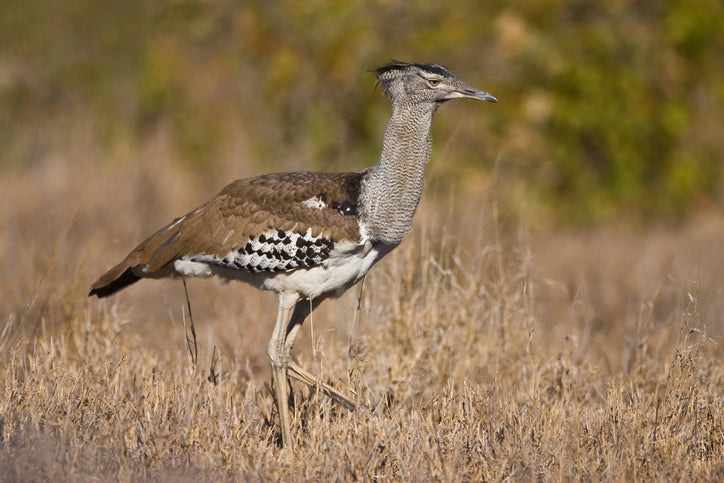
Kori Bustard
Share
The Kori Bustard of Kruger National Park 🦃
Stroll through the vast landscapes of Kruger National Park and you might spot the Kori Bustard, one of the heaviest flying birds native to Africa. With their impressive size and distinctive appearance, Kori Bustards are a fascinating sight for visitors.
A Mighty Bird: The Kori Bustard is known for its large size, with males often weighing up to 19 kilograms. Despite their bulk, these birds are capable flyers, especially when motivated by danger. However, they prefer to walk, and are often seen striding majestically across the savannah in search of food. 🌾🐦
Diet and Habitat: Kori Bustards are omnivorous and have a varied diet that includes seeds, berries, insects, and small vertebrates. This adaptability in feeding helps them thrive in diverse environments, from arid, open plains to grasslands within the park. 🍇🐜
Breeding and Behavior: One of the most interesting aspects of the Kori Bustard's behavior is their breeding display. Males perform a spectacular display that involves puffing up their necks and raising their feathers to appear larger to attract females. This ritual is a must-see during the breeding season. 💃🕺
Conservation Status: The Kori Bustard is listed as Near Threatened due to habitat destruction and hunting. Kruger National Park provides a sanctuary for these birds, where they are protected and can be studied to aid in conservation efforts. 🛡️🌍
Fun Fact for Kids: Did you know that Kori Bustards are believed to be the heaviest birds capable of flight? Watching them take off is a rare and special sight because of the effort involved in lifting their large bodies off the ground! 🚀
Engage and Learn: As you colour in the Kori Bustard on your Kruger Park roll, think about how this bird manages to live both on the ground and in the air. These birds remind us of the diversity and resilience of wildlife in Kruger National Park. 🎨📘